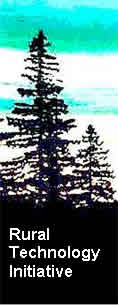 |
 |
 |
 |


Fact Sheet #15
Advanced Quality Control and Standardization Technology for Better Special
Forest Products Management
|
2002 By Dr. Moris Silber & Bruce Davitt Save
or Print a PDF copy of Fact Sheet #15
To approach this problem they employed a newly patented tannin bioassay and pioneered its implementation as a simple, low cost, and accurate technology for continuous quality monitoring and standardization of the herbal crops. This appears to be the first time tannin content in Echinacea and several other botanicals has been detected. Detecting tannins is of scientific and practical importance as it may explain the inconsistent pharmacological effects of St. John's Wort, Echinacea, and other herbal therapies usually reported from in vivo studies in animals and humans when administered orally. The project's latest results show that tannin bioassay may be helpful along with assessing quality of the medicinal botanicals and also in making close predictions about their expected pharmacological activity in the body. Longer term, the laboratory bench-top tannin assay procedures should be convertible into a Tanalyzer Technology - a hand-held digital device providing multiple sample screening for tannin directly in the field. Why Tannin? Tannins are ubiquitous in the plant kingdom. They are polyphenolic compounds and constitute one of the most important classes of secondary metabolites in plants. When digested as part of plant food, tannins aggressively precipitate the host's proteins. Tannins also display many other biological activities in human and animals (anti-oxidant, anti-bacterial, anti-viral, and anti-tumor) and, therefore, are very important in agriculture, medicine, and nutrition. Many methods for tannin detection and measurement in plants have been proposed including chemical methods and those based on tannin's inherent ability to precipitate proteins out from solutions. The last group of methods is more favorable in ecological, nutrition, and bio-medical studies. There are, however, many drawbacks and pitfalls in the protein-precipitation methods. A unique reagent, alkaline CBB-BSA was invented (US Patent, 2000) and chemically constructed. The big advantage of this reagent is that it can bind tightly to tannins in a concentration-dependent manner with no dye leakage. This allows for immensely increasing the specificity, sensitivity, and accuracy of the analysis, as well as to dramatically reduce its duration (from overnight to 15 min.) and cost (about 10 times). The method has high feasibility proof to be modified into a hand-held digital "Tanalyzer" for in-the-field use by harvesters and pickers.
Relying on the SFP industry network in the PNW, direct contacts with harvesters were established and herbal samples were obtained. Various plant parts (organs) of the samples were analyzed for tannin content. The mean results of these analyses for some of the botanical samples are summarized in Table 1. Table 1. Specific Tannin Content (STC) in Various
Medicinal Botanicals
A series of experiments have also been designed and completed to modify the original alkaline CBB-BSA-tannin precipitation analysis with regard to the precipitation (reaction) time. Convincing results have been obtained in laboratory experiments, which indicate that tannin-protein precipitation time may be reduced from overnight to less than an hour with no loss in tannin detection. This finding and any further modifications of the original tannin procedure will add significant value to its implementation as an "in the field" tannin detector for SFP harvesters. The capacity to provide front line technological support for PNW SFP industries is being enabled through scientific recommendations aimed at improving the standardized growing, harvesting, and processing methods so that consistently high quality herbal medicines and dietary supplements are sustainable and readily available. Contacts: For more information contact Dr. Moris Silber
(silber |



